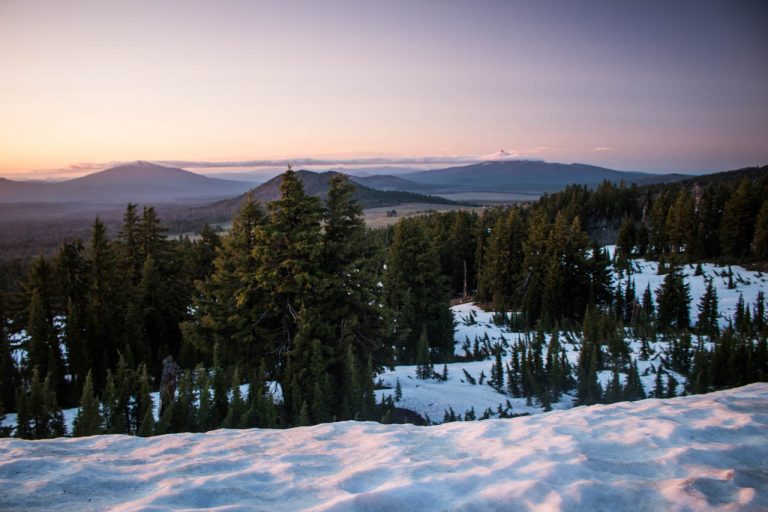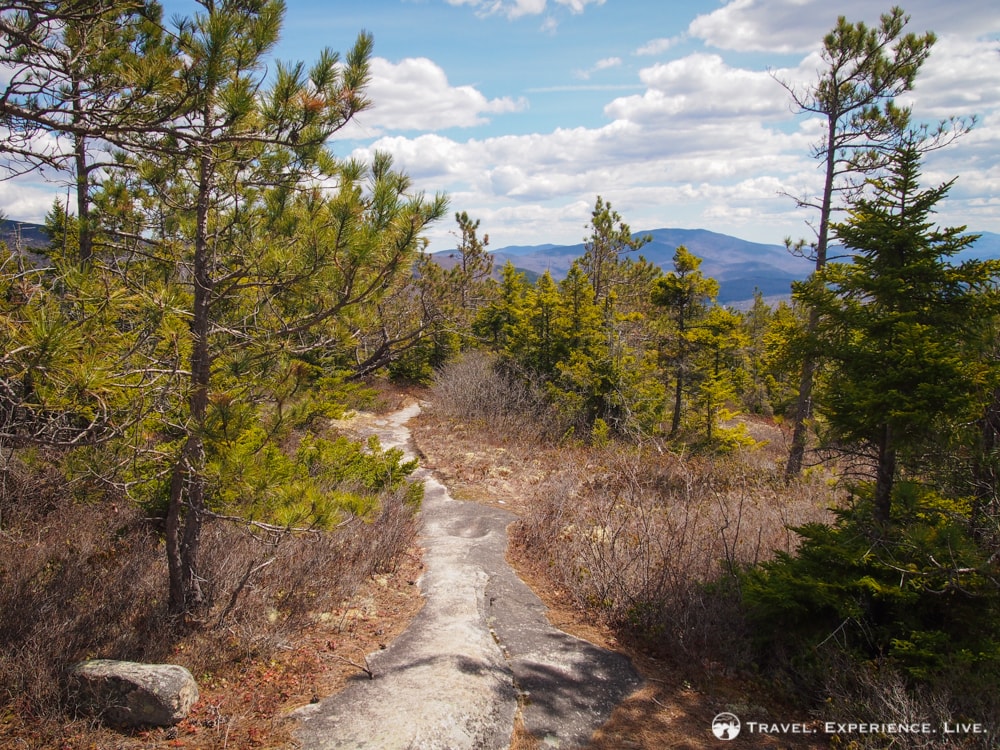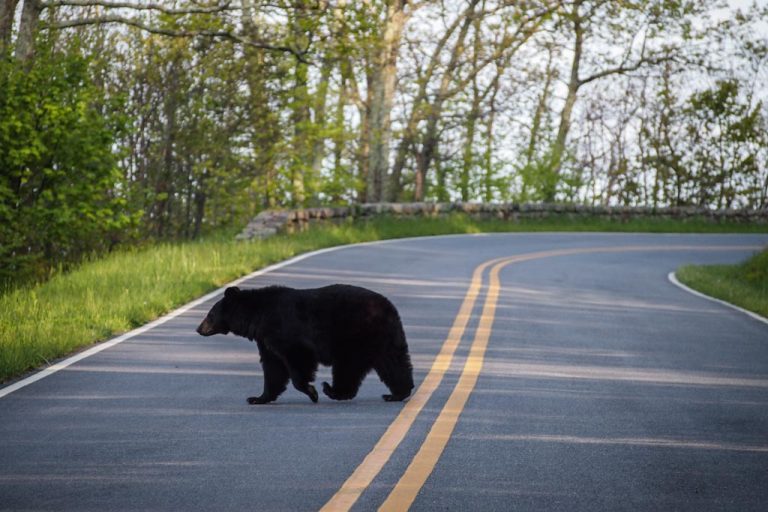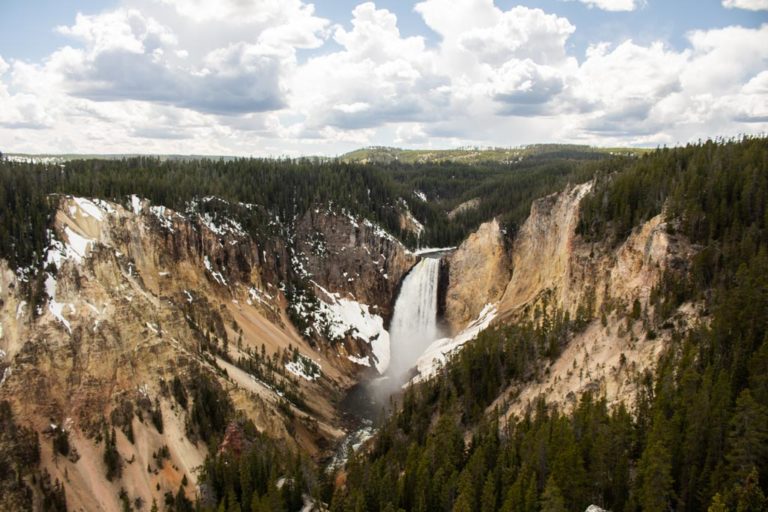Washburn Fire in Yosemite Rages On As California Heat Wave Develops
This news story about the Washburn Fire in Yosemite National Park is based on news releases from the National Park Service and Yosemite Fire and Aviation. You can see updates here.
First reported on July 7 near the Washburn Trail in Yosemite’s iconic Mariposa Grove, the Washburn Fire has now burned more than 2,300 acres.
Firefighting crews have worked frantically in recent days to save the park’s famous giant sequoias, efforts that appear to have been successful.
The worst is possibly yet to come for other areas in Yosemite National Park, though, as California braces for a scorching heat wave this week.
Washburn Fire Rips Through Yosemite National Park, California Heat Wave Builds
On the night from Sunday to Monday, the Washburn Fire grew 749 acres. The fire has now torched at least 2,340 acres in Yosemite National Park, much of which is near the Mariposa Grove of Giant Sequoias.
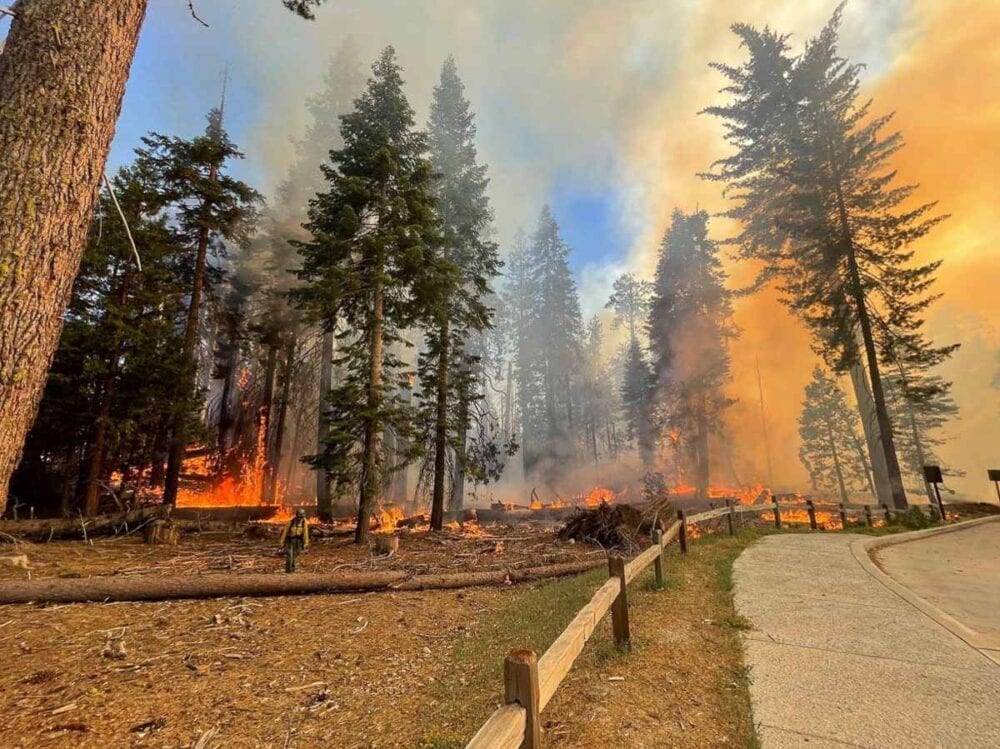
As of Monday, July 11, the fire was 0% contained and continued to spread, according to Yosemite Fire and Aviation.
A warming trend through this week means that increased fire activity is expected. “While structure wrap is currently not being used on the giant sequoias, firefighters are proactively protecting the Mariposa Grove through the use of a ground-based sprinkler system,” Yosemite Fire and Aviation said.
One of the trees being protected by sprinkler is the Grizzly Giant. Nearly 3,000 years old and standing 209 feet tall, it is the second tallest tree in Yosemite National Park and one of the park’s most popular attractions. This footage shows the sprinkler system around the iconic tree.
The sprinkler system “increases the humidity in the area around the trees and combined with the removal of ground fuels, the ground fire risk is greatly reduced.”
Mariposa Grove is home to over 500 mature giant sequoias, a natural treasure of global importance. Fortunately, these trees are exceptionally fire-resistant. In fact, their seeds rely on fire to be able to come out of their cones.
Recent fires in Yosemite National Park and elsewhere in California, however, are much more intense and hotter than natural historic fires in the region.
This does pose a threat to these enormous trees and the fire management program in Yosemite has used a wide range of methods to reduce fuels and lower fire risks for years, including prescribed burns.
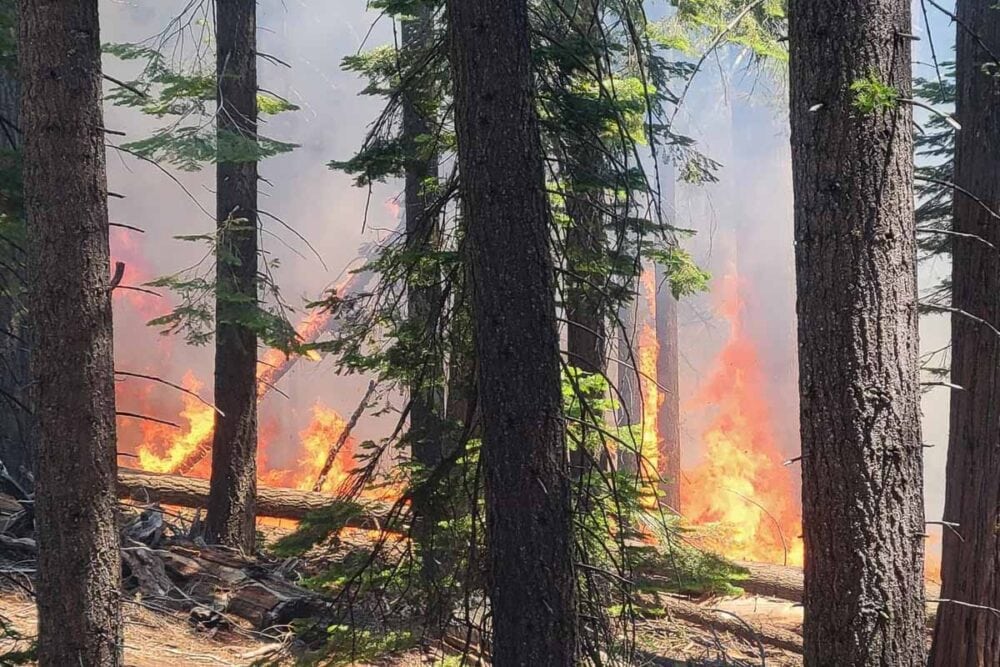
Washburn Fire Moves Out of Mariposa Grove Into Other Areas of Yosemite
According to the National Parks Traveler, the Washburn Fire appears “to be moving away from the iconic grove of trees.”
While the invaluable grove of giant sequoias might have escaped the worst, this does mean that, as the Washburn Fire moves north out of the grove, other parts of Yosemite National Park are in its crosshairs.
Yosemite Fire and Aviation said that “the fire is burning in difficult terrain which presents accessibility issues for firefighters.”
Due to a prolonged period of high tree mortality, there are now numerous standing and fallen dead trees in the area, creating dangerous circumstances for fire crews.
“The current fire location does not provide a large number of natural barriers which are often used to slow or stop the spread of a fire. Consequently, a great deal of hand and dozer line is being constructed,” they said.
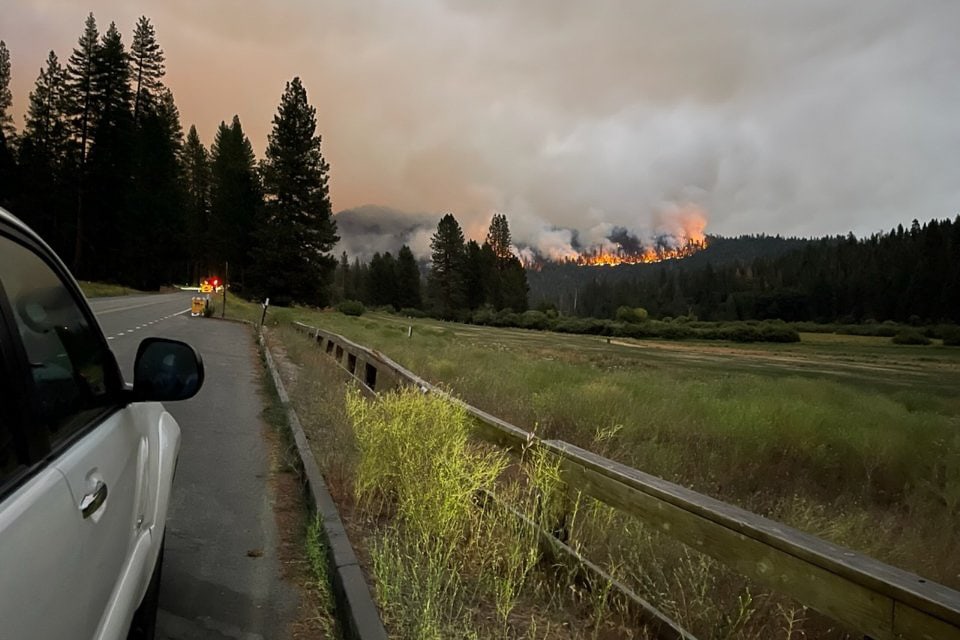
With temperatures in the upper-80s and 0% chance of rain throughout the week, the Washburn Fire is expected to spread. However, depending on where the fire moves to, its intensity could be reduced when it hits patches of previously burned forest.
The Washburn Fire is the latest fire in a series of devastating fires in California in recent years. Last year, the KNP Complex Fire ripped through Sequoia National Park, claiming up to 5% of the world’s giant sequoia population.
Also last year, in northern California’s Lassen Volcanic National Park, the massive Dixie Fire burned almost 50,000 acres and destroyed the historic Juniper Lake Cabins.
What Is Open in Yosemite National Park?
The community of Wawona and Wawona Campground have been evacuated due to a high risk of “spotting,” which happens when wind blows embers to other locations, causing other trees to ignite.
Wawona, Highway 41 (Wawona Road) south of Yosemite West and the Mariposa Grove remain closed until further notice.
All other areas in Yosemite National Park are open. The National Park Service does warn, though, that lines at entrances might be longer due to the Washburn Fire. Delays up to two hours are possible.
Visitors should expect smoky conditions—and potentially unhealthy air—throughout the entire park.
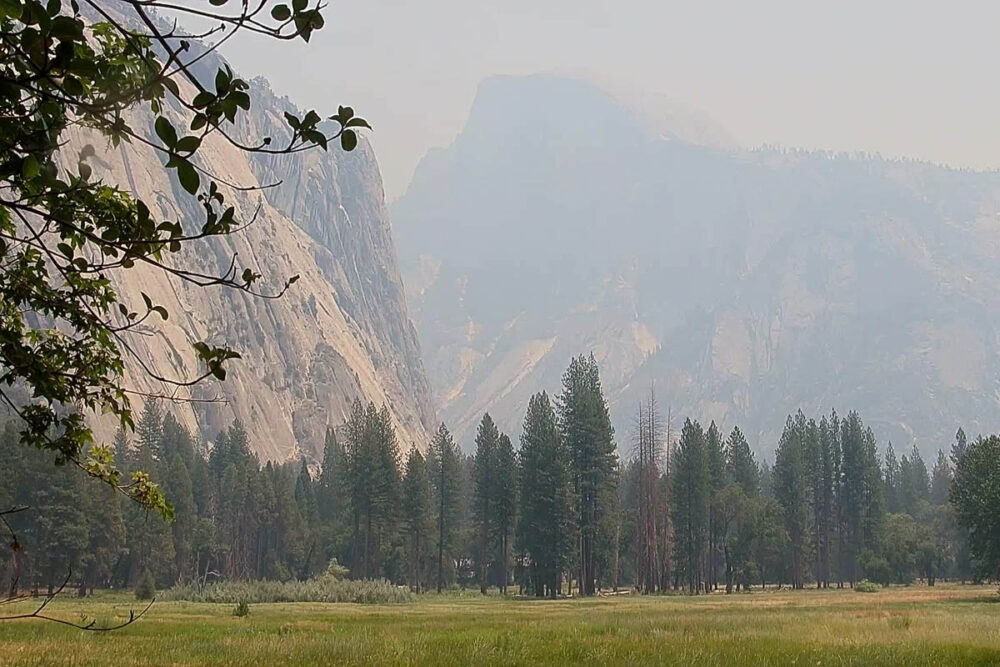
You can see current smoke conditions on this map: https://fire.airnow.gov/.
The Yosemite National Park Public Information Map shows areas under evacuation orders and fire advisories: https://nps.maps.arcgis.com/
For more information about current conditions, road closures and reservations, visit the Yosemite National Park website: https://www.nps.gov/yose/index.htm.
The Yosemite Fire and Aviation Facebook page is a great place to find updates on the Washburn Fire in Yosemite: https://www.facebook.com/YosemiteFire/


